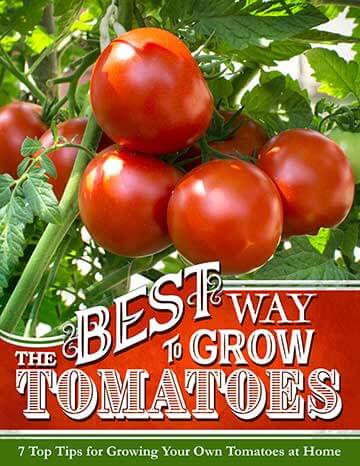
There’s something magical about watching a child discover dirt. It’s not the mess, but the mystery of how a handful of soil can become dinner, beauty or even a science experiment. A community garden gives that wonder a home. It’s part playground, part classroom and part kitchen, where kids learn that patience and compost make things grow.
Discover 7 top tips for growing, harvesting, and enjoying tomatoes from your home garden—when you access the FREE guide The Best Way to Grow Tomatoes, right now!
Have you ever dreamed of starting a grow zone that brings kids together to dig, laugh and snack on tomatoes straight from the vine? You don’t need to be a herbalist to do it. You just need some planning, enthusiasm and a sense of humor about muddy shoes.
The Benefits of Gardening for Kids
Planting with young children is a powerful tool for growth. A shared patch of earth becomes a natural classroom with innate learning in each activity. Growing plants teaches patience and responsibility. They don’t sprout overnight, so youngsters learn to care, wait and take pride in their work.
Green things spark curiosity and scientific thinking. When you garden with children, every seed is an experiment — will the pea sprout faster in sun or shade? What happens if you water too much? A green space is a lab where mistakes become discoveries.
The experimental nature builds community and cooperation. Shared chores like watering, weeding and harvesting help children work together and feel part of something larger than themselves.
Gardening can also encourage healthy eating. When children grow or cook their own vegetables, they are more likely to eat them without objection. Suddenly, spinach becomes exciting when it’s theirs.
Getting Your Garden Started
The best community yards start with conversations. Talk to parents, teachers or neighbors about what excites them, such as growing herbs for the local food pantry, creating pollinator patches or teaching kids where food really comes from.
Pick your space wisely. You don’t need a huge plot of land. Start with a few raised beds, a courtyard or even a wagon full of container plants. You’ll need sunlight, easy access to water and soil that drains well.
Make it accessible with paths wide enough for strollers and wheelchairs. Offer sitting spots for older volunteers. Community means everyone can join.
Find funding by asking local businesses to donate supplies, or organize a “sponsor-a-seedling” drive. Young participants can help decorate thank-you stones or signs for donors. Access small grants through programs, which often support and guide youth-based gardening projects.
Build a sprouting team with small groups for watering, weeding and harvest days. If the veggie patch is part of a school or community center, coordinate with maintenance staff to keep it thriving year-round.
Sustainable Gardening Practices for Kids
Teaching sustainability early turns young growers into lifelong stewards of the earth. Start simple and let the children take ownership. Here are a few helpful gardening practices:
- Composting: Show how banana peels and wilted lettuce become “black gold.” Toddlers love watching worms work their magic. Plus, kids can conduct a waste audit, which doubles as a biology lesson.
- Collecting rainwater: Set up a rain barrel that the kindergarteners can paint to teach water conservation. You’ll save on watering costs and show how nature takes care of itself.
- Recycling and reusing: Turn old milk cartons, egg boxes and plastic bottles into planters. Kids love the creativity of upcycling, and it keeps costs down.
- Choosing native plants: Native plants thrive with less maintenance and attract pollinators. A butterfly sighting can spark more excitement than a hundred PowerPoint slides on ecosystems.
What to Grow With Children
Choose plants that deliver quick wins and big rewards. Young gardeners need visible results, and delicious home-grown snacks help too.
| Plant Type | Why It Works |
| Fast sprouters like radishes, lettuce and peas | These grow in a few weeks and keep kids motivated when they have a short attention span. |
| Plants that make good snacks, like strawberries, cherry tomatoes and snap peas | Children find these irresistible, and they can be enjoyed straight from the vine or bush. |
| Sensory plants like lamb’s ear for its softness, mint for its scent and corn for its rustling sounds | Mix in seedlings that feel, smell or sound interesting. Children want to touch, taste and test. |
| Long-term growers like different-sized pumpkins or sunflowers | These are great for teaching patience. They’ll remind kids that not all good things come fast. |
Child-Friendly Gardening Tools Checklist
Tiny hands need the right tools to dig safely and confidently. Keep sharp tools out of reach and make outdoor rules fun. For instance, you could create a “Gardeners’ Oath” about kindness to plants and bugs. Meanwhile, stock up on:
- Lightweight, short-handled trowels and rakes for easy control
- Child-sized gloves for thorn-free hands
- Small watering cans to decorate
- Buckets, baskets and wagons for transporting soil and harvests
- Bug viewers and magnifying glasses for mini-explorers
Activities to Keep Kids Digging In
The best way to keep a community growers’ patch thriving is through play. Blend structure with freedom, and let curiosity lead the way. Find supportive volunteers to work with younger generations. Community gardens can help combat climate change, so you can engage volunteers who are passionate about the environment and will remain motivated to impact the community.
Create conditions where stories thrive through seedlings and knowledge grows like weeds. Try a composting challenge, where the children track what they add to the pile and measure decomposition.
Solve irrigation challenges with a rainwater barrel that the little stewards can paint. A barrel lets them measure how much water is collected after each storm. It’s a creative way to combine math and sustainability.
Teach which plants help each other grow, like basil next to tomatoes, and let mini gardeners arrange their “friend pairs” for a companion planting game. Use clear plastic bottles cut in half to plant herbs like parsley or basil. Through the transparent sides, kids can watch roots develop over time.
Undertake a scavenger hunt with a list of nature items, such as specific-colored flowers, buzzing insects and sweet-smelling herbs. Make discovery as fun.
Enjoying the Fruits of Your Labor
When harvest time comes, the fun multiplies. Celebrate the effort with activities that connect your garden to the picnic table.
Harvest and dry your herbs. Kids can bundle and hang them upside down to dry. Later, use the dried herbs in homemade pizzas or teas. Host a make-a-salad or smoothie day. Nothing tastes better than a lettuce you grew yourself. Let your young stewards wash, chop and mix their own lunch.
Harvest ripe seeds, catalog and preserve them for the next season. Teach eager minds how one plant can give birth to next year’s crop. It’s a simple but powerful lesson in sustainability. Host a garden picnic day and invite families to bring dishes made from the harvest.
Pride will make those little faces light up. You’ll lay the seeds, ensuring children eat more than their five-a-day fruit and vegetable quota, while wasting less produce.
Growing More Than Plants
Starting a youth community garden program requires connection, not perfection. Some rows will wilt, and a few kids will overwater the basil. A few radishes might mysteriously vanish, but that’s part of the joy.
You’ll watch once-shy youngsters become leaders as families meet over wheelbarrows and transform an empty plot into a patchwork of laughter, color and life. So grab your gloves and a packet of seeds. The nature nook you start today might grow tomatoes and along with patience, teamwork and a lifelong love of nature.




